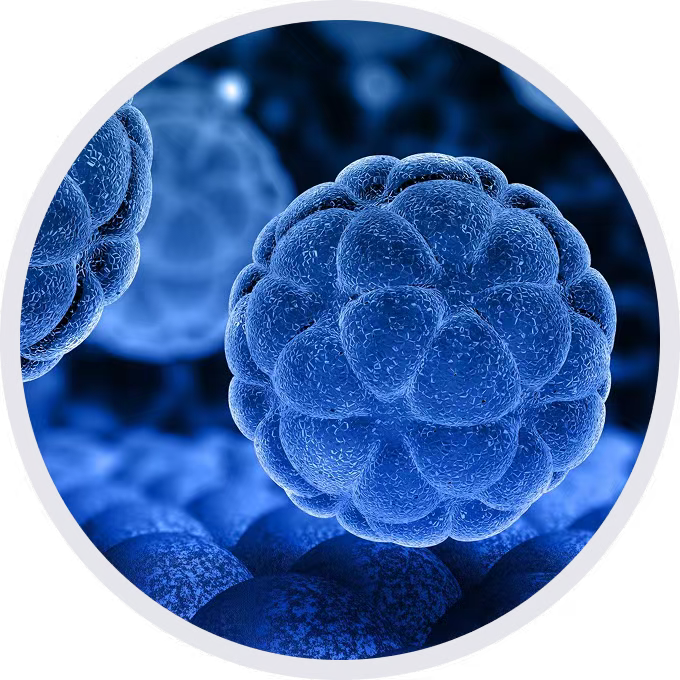
• 310708

| Product name | B-hEPCAM MC38 |
|---|---|
| Catalog number | 310708 |
| Strain background | C57BL/6 |
| NCBI gene ID | 4072 (Human) |
| Aliases | DIAR5; EGP-2; EGP314; EGP40; ESA; HNPCC8; KS1/4; KSA; M4S1; MIC18; MK-1; TACSTD1; TROP1; EPCAM |
| Tissue | Colon |
| Disease | Colon carcinoma |
| Species | Mouse |
| Application | B-hEPCAM MC38 cells have the capability to establish tumors in vivo and can be used for efficacy studies. |
The mouse Epcam gene was replaced by human EPCAM coding sequence in B-hEPCAM MC38 cells. Human EPCAM is highly expressed on the surface of B-hEPCAM MC38 cells.
Gene targeting strategy for B-hEPCAM MC38 cells. The exogenous promoter and human EPCAM coding sequence were inserted to replace part of murine exon 4 and all of exons 5~7. The insertion disrupts the endogenous murine Epcam gene, resulting in a non-functional transcript.
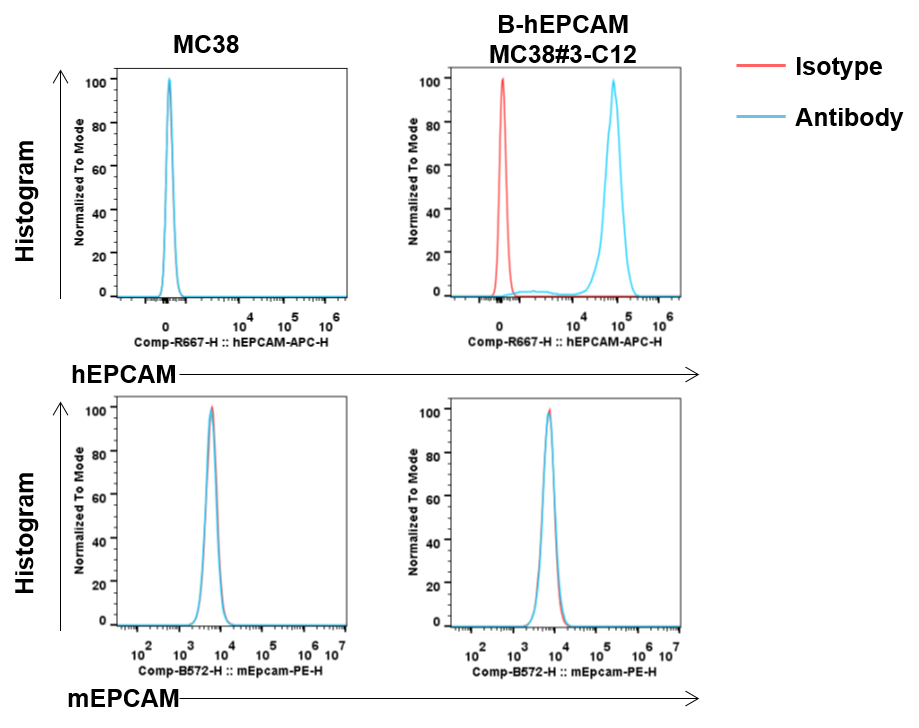
EPCAM expression analysis in B-hEPCAM MC38 cells by flow cytometry. Single cell suspensions from wild-type MC38 and B-hEPCAM MC38 cultures were stained with species-specific anti-mouse EPCAM antibody (Biolegend, 118206), and anti-human EPCAM antibody(Biolegend, 324208). Mouse EPCAM was not detected both on the surface of B-hEPCAM MC38 cells and wild-type MC38 cells. Human EPCAM was detected on the surface of B-hEPCAM MC38 cells but not wild-type MC38 cells. The 3-C12 clone of B-hEPCAM MC38 cells was used for in vivo experiments.

Subcutaneous homograft tumor growth of B-hEPCAM MC38 cells. B-hEPCAM MC38 cells (5x105) and wild-type MC38 cells (5x105) were subcutaneously implanted into C57BL/6 mice (female, 5-8-week-old, n=5). Tumor volume and body weight were measured twice a week. (A) Average tumor volume ± SEM. (B) Body weight (Mean± SEM). Volume was expressed in mm3 using the formula: V=0.5 X long diameter X short diameter2. As shown in panel A, B-hEPCAM MC38 cells were able to establish tumors in vivo and can be used for efficacy studies.
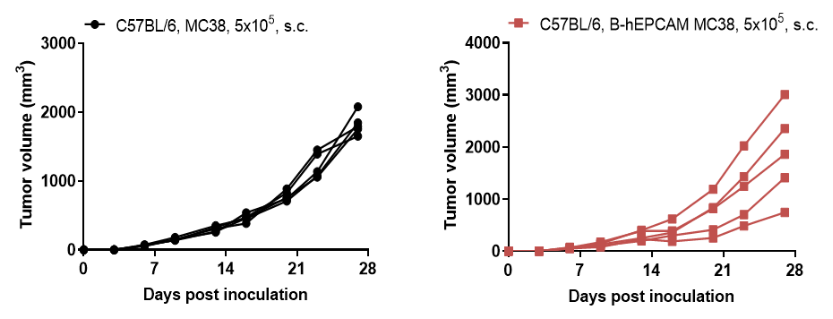
B-hEPCAM MC38 tumor growth of individual mice. B-hEPCAM MC38 cells (5x105) and wild-type MC38 cells (5x105) were subcutaneously implanted into C57BL/6 mice (female, 5-8-week-old, n=5). As shown in panel, B-hEPCAM MC38 cells were able to establish tumors in vivo and can be used for efficacy studies.
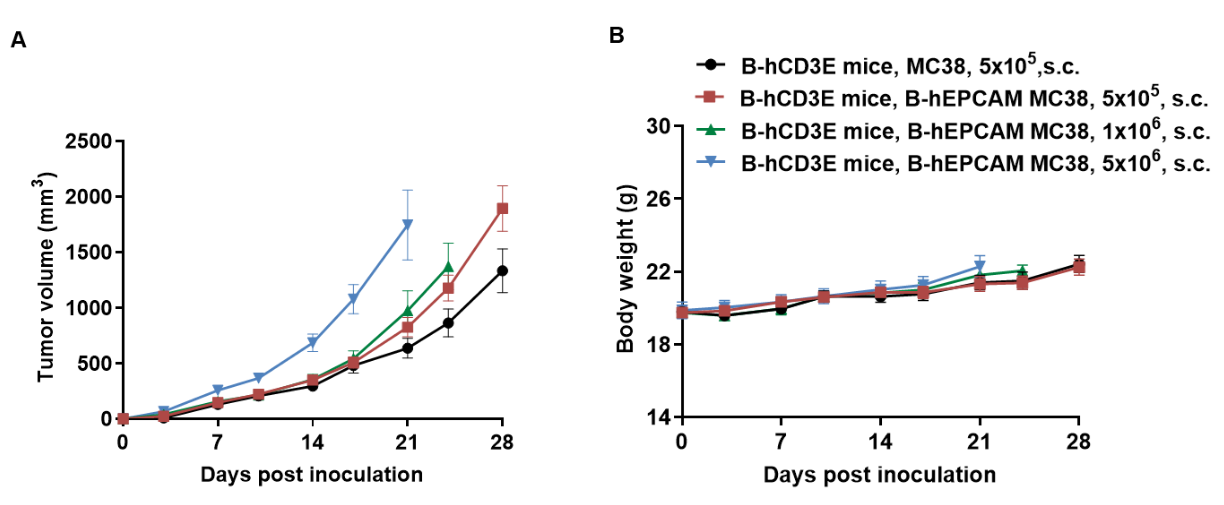
Subcutaneous homograft tumor growth of B-hEPCAM MC38 cells. B-hEPCAM MC38 cells (5x105, 1x106, 5x106) and wild-type MC38 cells (5x105) were subcutaneously implanted into B-hCD3E mice (female, 8-week-old, n=6). Tumor volume and body weight were measured twice a week. (A) Average tumor volume ± SEM. (B) Body weight (Mean± SEM). Volume was expressed in mm3 using the formula: V=0.5 X long diameter X short diameter2. As shown in panel A, B-hEPCAM MC38 cells were able to establish tumors in vivo and can be used for efficacy studies.
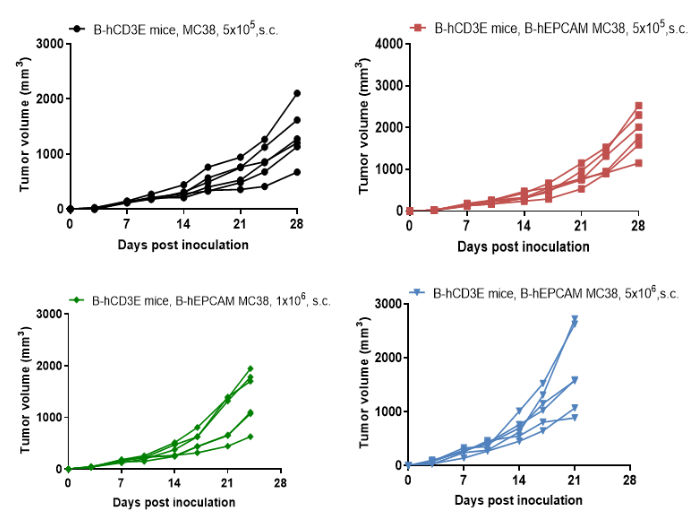
B-hEPCAM MC38 tumor growth of individual mice. B-hEPCAM MC38 cells (5x105, 1x106, 5x106) and wild-type MC38 cells (5x105) were subcutaneously implanted into B-hCD3E mice (female, 8-week-old, n=6). As shown in panel, B-hEPCAM MC38 cells were able to establish tumors in vivo and can be used for efficacy studies.

Subcutaneous homograft tumor growth of B-hEPCAM MC38 cells. B-hEPCAM MC38 cells (1x106) and wild-type MC38 cells (5x105) were subcutaneously implanted into B-hCD3EDG/hEPCAM mice (female, 9-week-old, n=6). Tumor volume and body weight were measured twice a week. (A) Average tumor volume ± SEM. (B) Body weight (Mean± SEM). Volume was expressed in mm3 using the formula: V=0.5 X long diameter X short diameter2. As shown in panel , B-hEPCAM MC38 cells were able to establish tumors in vivo and can be used for efficacy studies.
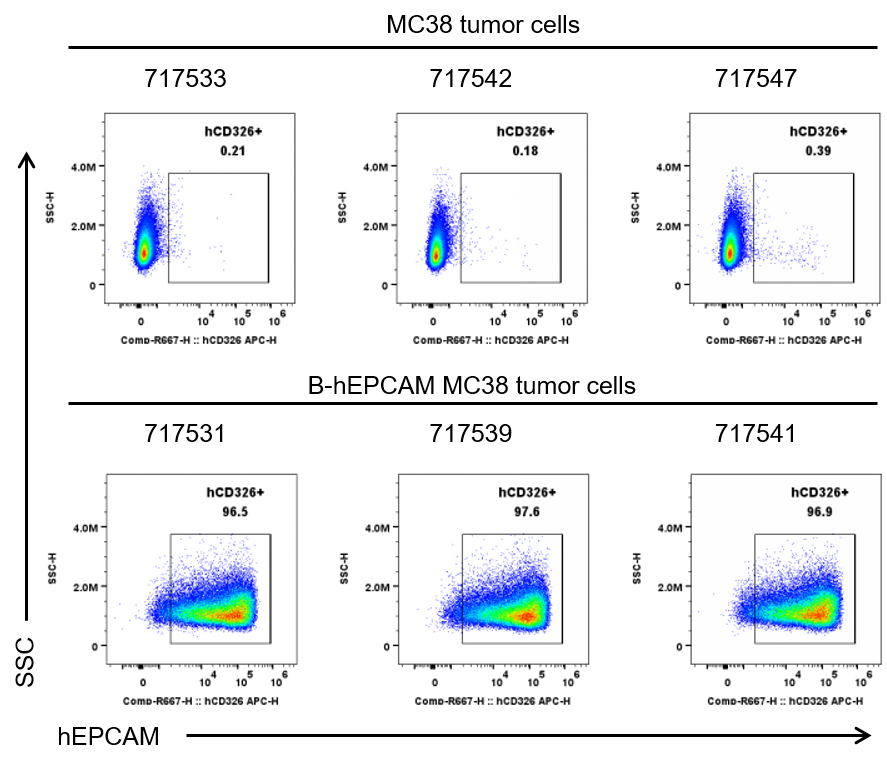
B-hEPCAM MC38 cells were subcutaneously transplanted into B-hCD3EDG/hEPCAM mice (female, 9-week-old, n=6), and on 28 days post inoculation, tumor cells were harvested and assessed for human EPCAM expression with anti-human EPCAM (Biolegend, 369809) antibodie by flow cytometry. As shown, human EPCAM was highly expressed on the surface of tumor cells. Therefore, B-hEPCAM MC38 cells can be used for in vivo efficacy studies of EPCAM therapeutics.

Immunohistochemical (IHC) analysis of EPCAM expression in B-hEPCAM MC38 tumor tissues. B-hEPCAM MC38 cells were subcutaneously transplanted into B-hCD3EDG/hEPCAM mice (female, 9-week-old, n=6), and on 28 days post inoculation, tumor tissues were harvested and assessed for human EPCAM expression via IHC using an anti-human EPCAM antibody (abcam, ab223582). (A) Representative histology and (B) H-score from image analysis of immunohistochemical staining for human EPCAM in MC38 tumor tissues and B-hEPCAM MC38 tumor tissues. Human EPCAM showed high expression in B-hEPCAM MC38 tumor tissues.